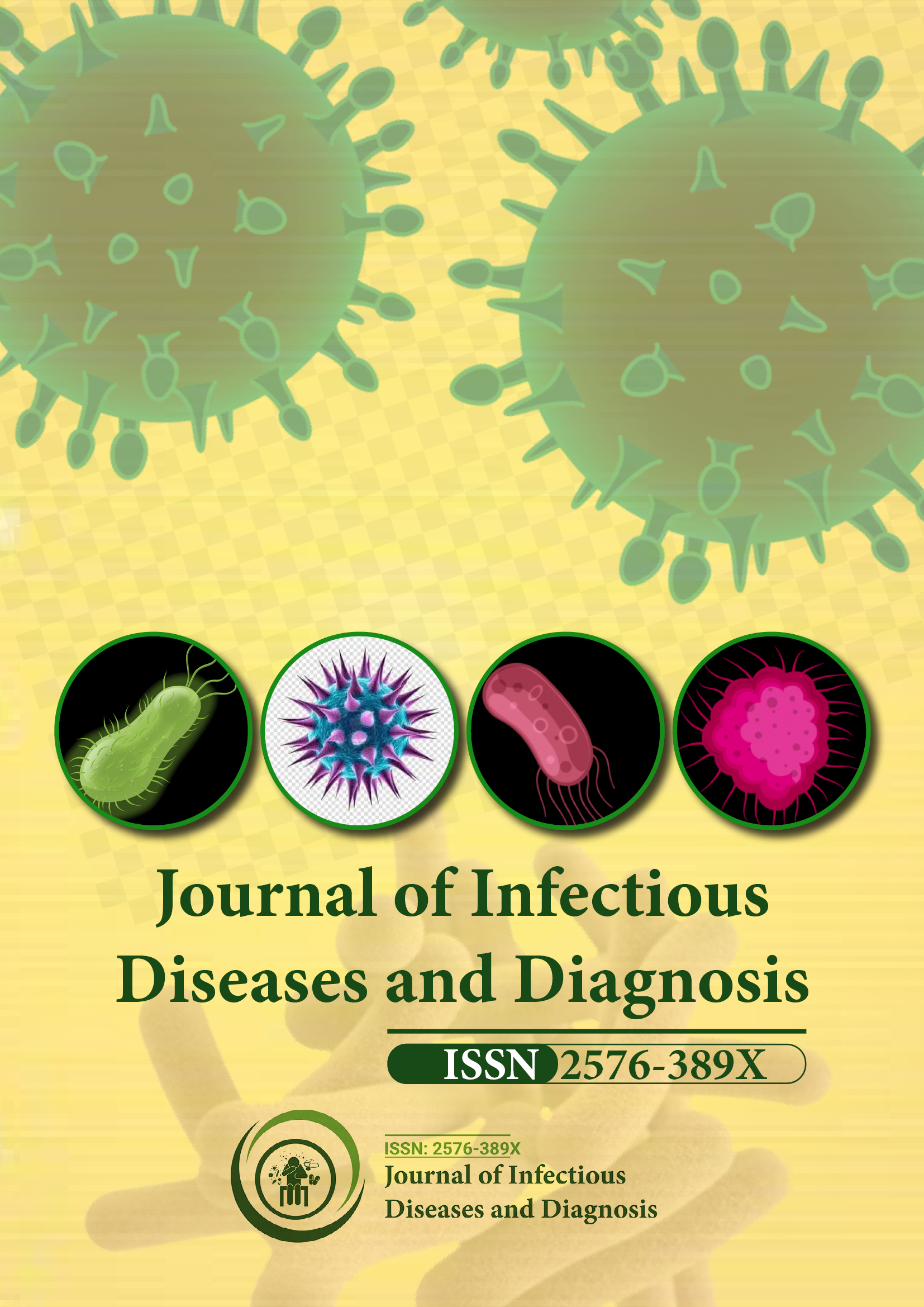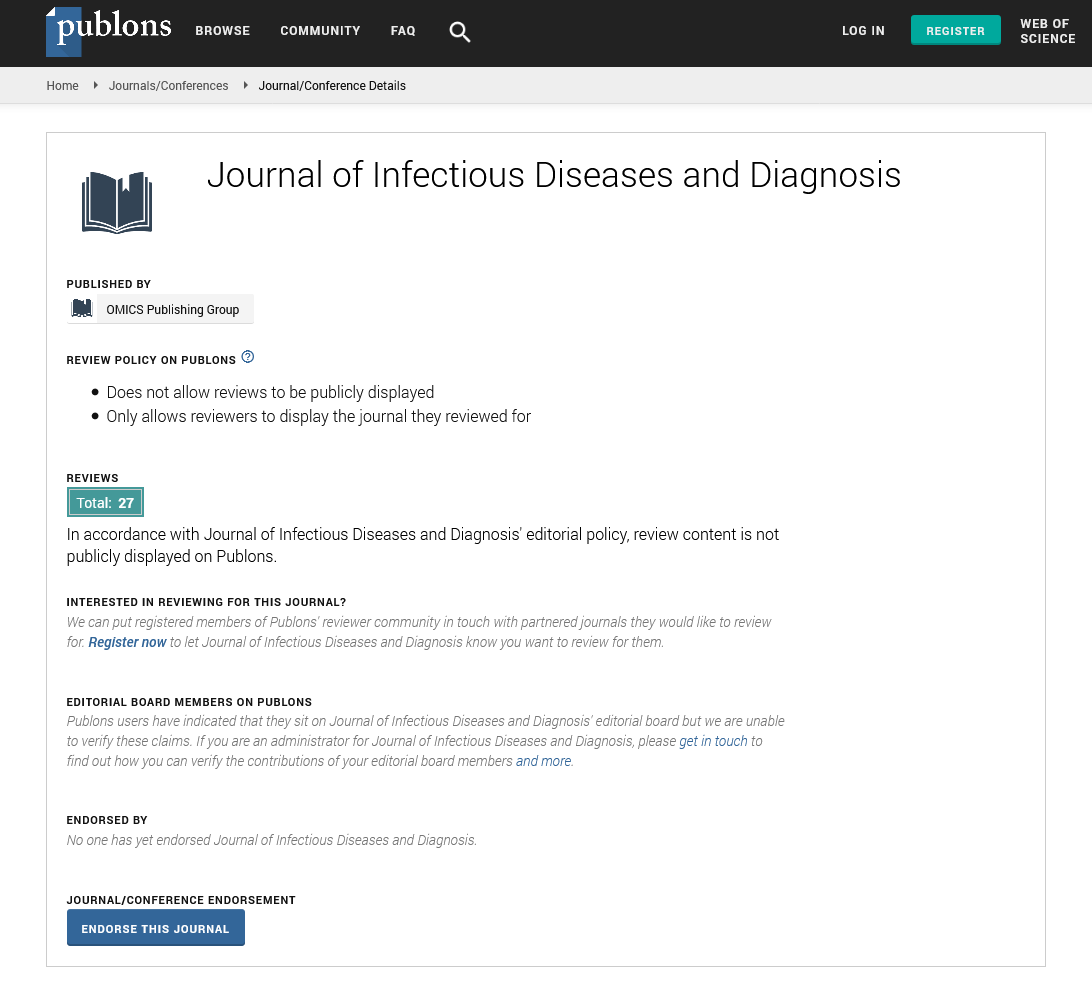Indexed In
- RefSeek
- Hamdard University
- EBSCO A-Z
- Publons
- Euro Pub
- Google Scholar
Useful Links
Share This Page
Journal Flyer

Open Access Journals
- Agri and Aquaculture
- Biochemistry
- Bioinformatics & Systems Biology
- Business & Management
- Chemistry
- Clinical Sciences
- Engineering
- Food & Nutrition
- General Science
- Genetics & Molecular Biology
- Immunology & Microbiology
- Medical Sciences
- Neuroscience & Psychology
- Nursing & Health Care
- Pharmaceutical Sciences
Commentary - (2025) Volume 10, Issue 2
Measles in the Modern Era: A Resilient Public Health Challenge
Mitchell Williams*Received: 25-Feb-2025, Manuscript No. JIDD-25-28664; Editor assigned: 27-Feb-2025, Pre QC No. JIDD-25-28664 (PQ); Reviewed: 14-Mar-2025, QC No. JIDD-25-28664; Revised: 21-Mar-2025, Manuscript No. JIDD-25-28664 (R); Published: 28-Mar-2025, DOI: 10.35248/2576-389X.25.10.318
Description
Measles is a viral illness caused by the measles virus, a member of the Paramyxoviridae family. Though once widespread, the incidence of measles dropped dramatically with the introduction of the measles vaccine in the 1960s. However, outbreaks continue to occur globally, often in areas with low immunization rates or in communities where vaccine hesitancy persists.
Transmission and epidemiology
Measles spreads through respiratory droplets when an infected individual coughs or sneezes. The virus can linger in the air or on surfaces for up to two hours, making it extremely easy to contract in crowded or enclosed spaces. It has one of the highest reproduction rates, meaning one infected person can spread the disease to 12 to 18 others in a susceptible population.
The incubation period ranges from 7 to 14 days. Infected individuals can spread the virus up to four days before and after the appearance of the characteristic rash. Outbreaks often occur in unvaccinated populations, with young children and immunocompromised individuals at greater risk of severe illness or death.
Clinical features
Measles begins with a prodromal phase, marked by high fever, cough, runny nose and conjunctivitis. Small white spots, known as Koplik spots, may appear inside the cheeks an early sign often preceding the rash. The rash itself typically starts on the face and spreads downward across the body, lasting several days.
Most people recover without long-term effects, but complications are common, particularly in malnourished children and those with weakened immune systems. Common complications include ear infections, diarrhea and pneumonia. Less frequent but more serious outcomes include encephalitis (brain inflammation), which can lead to permanent brain damage or death.
Impact on public health
The burden of measles is felt most in low- and middle-income countries, where access to healthcare and vaccines may be limited. According to the World Health Organization (WHO), measles was responsible for an estimated 136,000 deaths globally in 2022, mostly among children under the age of five.
Even in higher-income regions, outbreaks have re-emerged due to declining vaccination rates. This is often fueled by misinformation about vaccines, creating pockets of vulnerability within populations that would otherwise be protected through herd immunity.
Vaccination and prevention
The most effective way to prevent measles is through vaccination. The measles vaccine, commonly administered as part of the MMR (Measles, Mumps and Rubella) combination, provides long-lasting protection after two doses. Widespread immunization efforts have prevented millions of deaths since the vaccine’s introduction.
However, achieving and maintaining high coverage is essential. The WHO recommends at least 95% vaccination coverage to prevent outbreaks and protect those who cannot be vaccinated for medical reasons. Gaps in coverage whether due to conflict, poor infrastructure, or misinformation can lead to resurgence.
Catch-up vaccination campaigns and targeted outreach can help close these gaps. Health education also plays an important role in correcting misconceptions and increasing public confidence in vaccines.
Surveillance and outbreak response
Effective disease surveillance systems help detect and respond to measles cases quickly. Prompt reporting of suspected cases enables health authorities to investigate, contain outbreaks and implement control measures, including contact tracing and emergency immunization.
Laboratory confirmation of cases is vital for accurate diagnosis and data collection. Measles can mimic other febrile rash illnesses, making clinical diagnosis alone unreliable in some cases.
Global eradication efforts
While the elimination of measles has been achieved in several regions, including the Americas and parts of Europe and the Western Pacific, global eradication remains a challenge. Political commitment, sustained funding and international cooperation are all necessary to reach and maintain elimination targets.
Initiatives like the Measles & Rubella Initiative a global partnership that supports vaccination campaigns and health system strengthening have made substantial progress. However, setbacks during the COVID-19 pandemic, including disruptions to routine immunization, have reversed some gains.
Future directions
Continued investment in immunization programs, enhanced surveillance and community engagement are key to preventing future outbreaks. Research into new vaccine delivery methods, including needle-free options and single-dose alternatives, may also expand access in hard-to-reach areas.
Efforts to integrate measles control into broader health initiatives, such as maternal and child health programs, can improve efficiency and reach. Combining routine immunization with nutrition, sanitation and health education services helps build more resilient health systems capable of managing infectious diseases more effectively.
Conclusion
Measles remains a dangerous but preventable disease. Its continued presence highlights the need for vigilance, commitment to immunization and accurate public communication. By addressing barriers to vaccine access and countering misinformation, global health efforts can significantly reduce measles transmission and move closer to the goal of worldwide elimination.
Citation: Williams M (2025). Measles in the Modern Era: A Resilient Public Health Challenge. J Infect Dis Diagn. 10:318.
Copyright: © 2025 Williams M. This is an open-access article distributed under the terms of the Creative Commons Attribution License, which permits unrestricted use, distribution and reproduction in any medium, provided the original author and source are credited.

